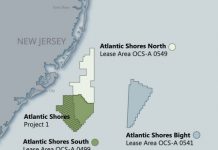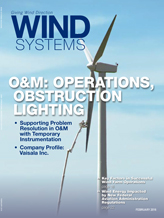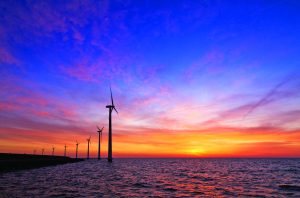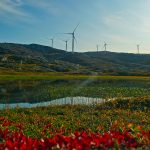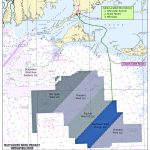Globally, there has been an increase in the amount of installed wind capacity for electricity generation in recent years. However, only a few countries and regions account for the vast majority of it, including China, which has the largest proportion of installed wind capacity, followed by the United States and the European Union.
The majority of this is made up by onshore wind turbines with a smaller, but rapidly growing, offshore sector. Both technologies are increasingly being installed around the world to meet climate change goals and address energy security concerns. While the rate of installation in countries such as China has been very high, Europe and North America provide a helpful comparison to assess the future prospects for the industry in these locations, as they are two regions with comparable markets and support structures for the development of wind energy.
Governments in both regions have provided feed-in tariff contracts, tax incentives, and capital grants to support the industry, resulting in installations — largely for onshore wind farms — that have been developed at a rapid rate in many European countries as well as many parts of the U.S. Offshore wind farms have also been built, but they have been restricted to a few nations including the U.K., Denmark, and Germany due to higher capital costs and complexities in their construction.
Wind Energy in Europe
A number of countries in Europe have successfully developed large-scale wind industries. Denmark was one of the first countries to develop an onshore wind industry and has since developed a large manufacturing base. Other countries such as Spain, Ireland, Germany, and the U.K. have installed sufficient numbers of turbines to provide a substantial proportion of overall electricity generation.
The rate of installation depends in part on social acceptance of wind technology. In some countries, it has been much more readily accepted than others. For example, there has been a high level of public support for the installation of onshore wind farms in Germany and Denmark for many years with widespread community ownership of projects, which is encouraging development. In other countries, including the U.K., there has been social and political opposition to onshore wind with stronger support for offshore wind farms, as they do not have the same impact on landscapes that onshore projects can face.
Wind Energy in North America
In the U.S., there has been a great deal of success with the installation of onshore wind. Since 2008, installed capacity has increased more than 300 percent from 16.7 GW to 69.5 GW at the end of 2015. This has led to individual states generating a substantial proportion of their electricity from wind. The current support available for constructing wind farms in many parts of the U.S. is robust, with strong tax incentives for installations in states such as California, Texas, and Iowa.
There is also strong support on a federal level. President Obama recently passed a five-year extension to the production tax credit (PTC). Under the legislation, the 2.3-cent-per-kilowatt-hour PTC for wind will be extended through next year, and then the credit will be reduced by 20 percent each year through 2020. The PTC extension means that predictable financial support is guaranteed for the next five years for the industry, which will mean a greater number of projects that will likely be installed to bolster the development of the industry nationally.
There is also a reasonable market in Canada. Provinces such as Ontario, Quebec, and Alberta have substantial installed capacity with tax incentives for further development. However, there is currently very little offshore wind development in the U.S. or Canada. Some farms have been proposed in the Great Lakes region and on the East Coast, although these have been beset by funding issues and local opposition to their construction. One project that is currently under construction is the Block Island Offshore Wind Farm in Rhode Island. While there have been controversies about the approval of the project, once it has been constructed it should make it easier for other projects to be built.
Lessons from Europe’s Wind Industry
Governments have provided support for the wind industry through feed-in tariff contracts, tax incentives, and capital grants, providing long-term financial incentives to encourage investment. However, changes in the regulatory environment can occur quickly if a country is facing financial difficulties or a new government has different priorities for future energy provision.
This has been the case in a number of European countries — including the U.K. where the government has substantially reduced financial support to the onshore wind sector, leading to a decline in predicted rates of future installation and affecting levels of private sector investment. This is due to a perceived reduction in financial stability and long-term support for the sector.
Due to the variable nature of the output of electricity from wind farms, there is a limit on the proportion of power that can be generated using the technology on a conventional power grid system.
Germany is now facing issues with balancing its national grid due to the success of increasing the proportion of electricity generated from renewable sources. This is a design issue that can be mitigated with sufficient energy storage capacity and interconnectors with other nations. However, the timescales and financial considerations on which such solutions can be implemented do place limitations on the amount of wind power that can be installed on a grid.
Future Opportunities for Wind Energy in North America
From the experiences of the wind industry in Europe, it pays to watch the regulatory landscape. While the current investment climate looks favorable with a five-year extension to the PTC and support at the state level, large-scale projects that rely on large-scale infrastructure and long-term guarantees of government support could potentially be disrupted. Other factors such as local planning regulations, environmental considerations, and infrastructure capacity for new projects should also be taken into account.
The issues that face an individual project will depend on contextual factors such as the scale of the development and the type of turbines used, but some general points can be applied. Large-scale onshore wind farms are at greater risk of delays or cancellations in construction with higher risks of planning issues and disruptions in government support.
Small-scale onshore installations, on the other hand, are relatively low-cost, easy to install, effective in a wide variety of locations, and can be used in conjunction with other technologies. This means that a diverse market for them is likely to continue even if government support is withdrawn or in areas where such support is not provided on a local level.
Studying and comparing the ways in which Europe and North America have managed the development and deployment of wind power while navigating technical, political, and economic challenges can provide insights to avoid some of the potential pitfalls that can beset projects and help to harness the wind in both regions.
To learn more about renewable energy and energy efficiency through training courses, go to www.EUenergycentre.org.
















